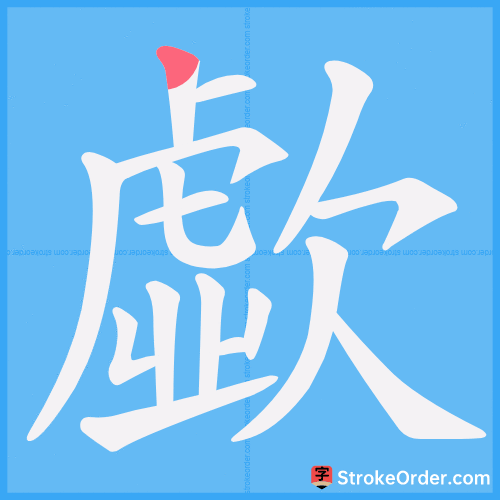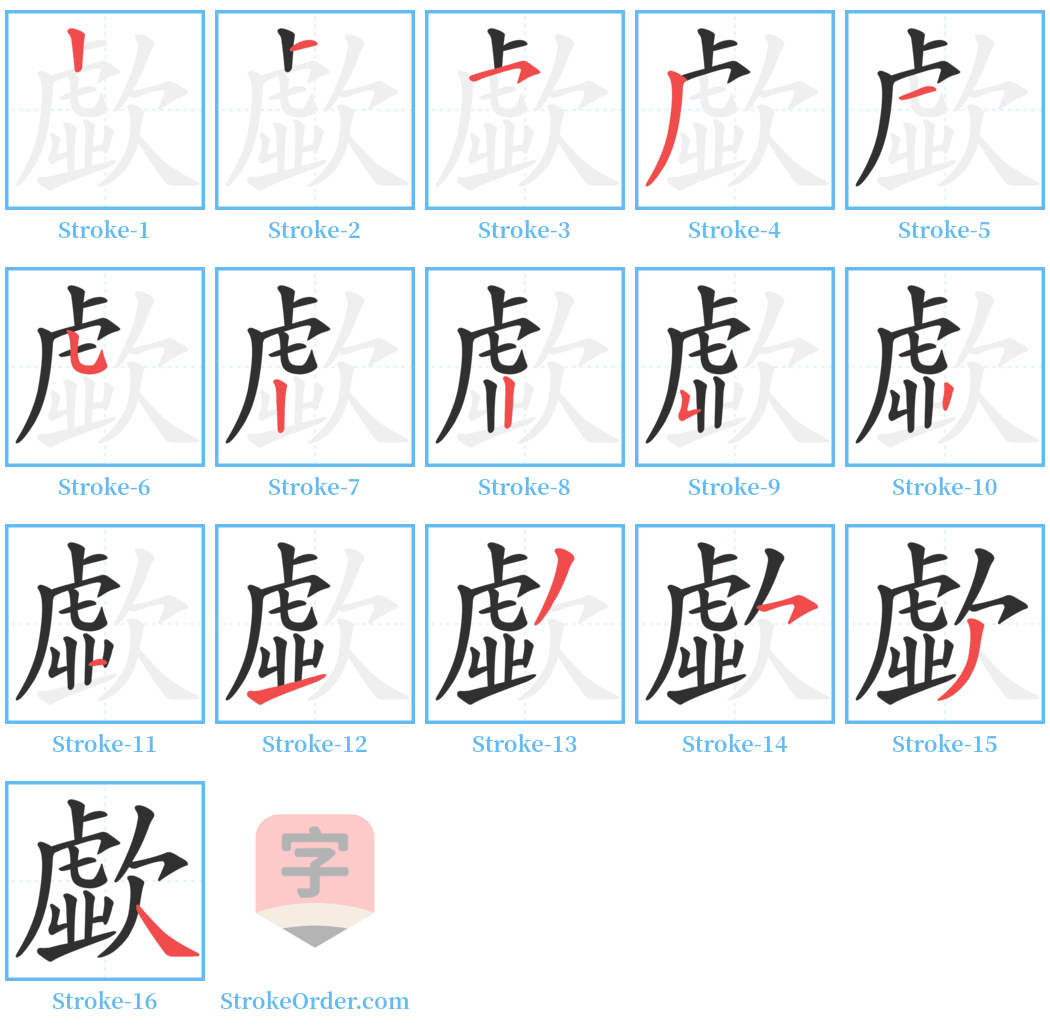歔 Stroke Order
Animated Stroke Order of 歔

Stroke Order Diagrams for 歔

Step-by-Step Handwriting Guide for 歔

Learn to Write Chinese Characters with Video Tutorials
Watch the video of writing the Chinese character "歔", learn the correct stroke order (笔顺) of the character "歔", and master the standard way of writing the character "歔".
Free Printable Handwriting Practice with Stroke Order: 歔
Printable Writing Practice Worksheet of "歔" in Portrait Orientation (Tian Zi Ge)

Printable Writing Practice Worksheet of "歔" in Landscape Orientation (Tian Zi Ge)

Information of 歔
Pinyin
xū
Radical
欠
Strokes
15 strokes
Usage
★★★
Definition
to snort
歔 [xū]
【动】
1. 叹息 ([En.] sigh)
引例:
《说文》:歔,欷也。一曰出气也。
《楚辞·离骚》:曾歔欷余郁邑兮。
清· 龚自珍《尊命二》:汉司马迁引而申之,于其序外戚也,言命者四,言之皆累歔。
例:如: 歔吁; 歔泣(叹息哭泣)
2. 鼻孔出气 ([En.] breathe from nose)
引例:
《老子》:故物或行或随,或嘘或吹。
3. 抽泣 ([En.] sob)
例:如: 歔歈(悲歌)
歔 [xū]
【Verb】
1. Sigh ([En.] sigh)
Reference:
"Shuowen Jiezi": 歔, means 'to sigh'. Another interpretation is 'to breathe out'.
"Chuci · Lisao": Once I sighed in my worries.
Qing Dynasty · Gong Zizhen "Zunming II": The historian Sima Qian quoted and emphasized it in his preface, expressing that all four aspects of fate are intertwined with sighs.
Example: For example: 歔吁; 歔泣 (sighing and crying)
2. Breathe out through the nose ([En.] breathe from nose)
Reference:
"Laozi": Therefore, things may act or follow, or sigh or blow.
3. Sob ([En.] sob)
Example: For example: 歔歈 (a lamenting song)